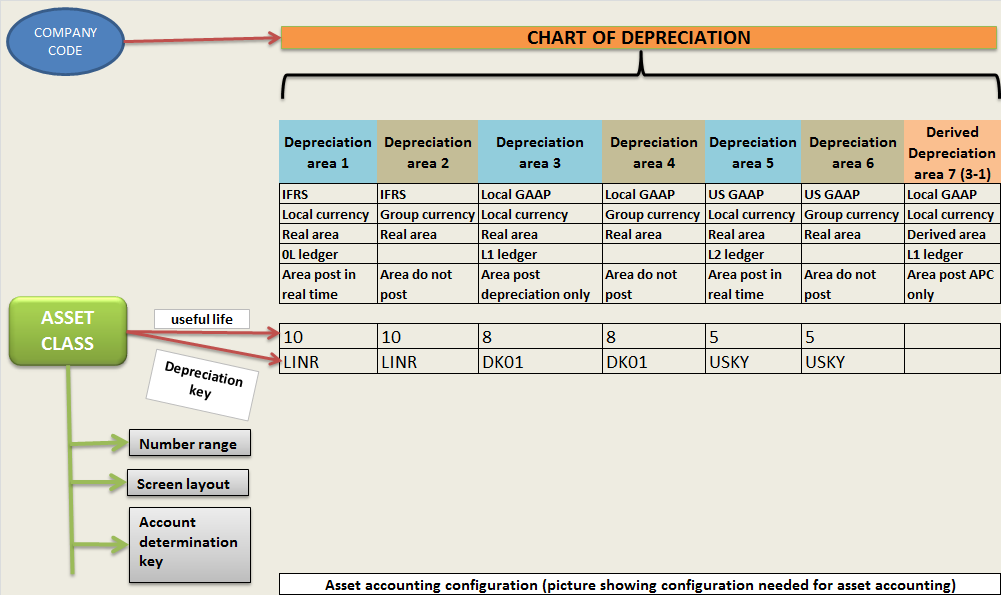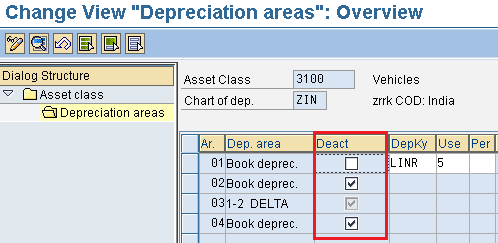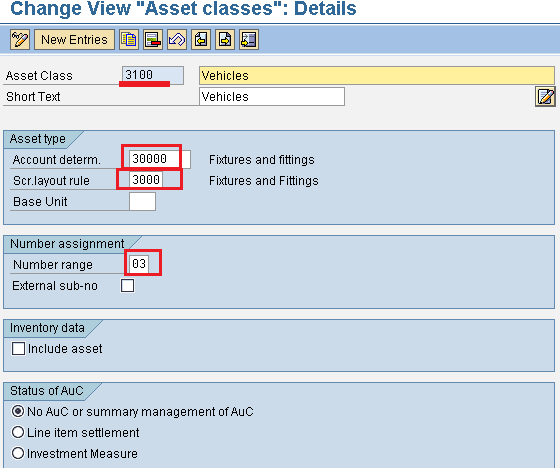Let’s understand the configuration needed for asset accounting in very simple terms with the help of example.

Company code is assigned to chart of depreciation.
Chart of depreciation has list of depreciation areas depending upon the accounting requirement.
For the asset class, useful life and depreciation key is defined in depreciation area.
(If needed, an asset class can be deactivated in any particular depreciation area.)

Screenshot showing how to deactivate depreciation area in asset class (T code: OAYZ)
Number range, screen layout & account determination key is assigned to asset class as shown below.

Screenshot showing parameters maintained in asset class (T code: OAOA)
Let’s understand how above configuration helps in asset accounting
For creating asset master (T code: AS01), we need to input asset class and company code.
From asset class, system picks screen layout. Based upon screen layout, asset master input fields are either required or optional or suppressed
Once input fields in asset master are filled, click on the save button. Asset master is created with asset number picked from number range assigned to asset class.
Asset inherits account determination key from asset class.
From company code, chart of depreciation is picked which in turn leads to determination of depreciation areas. Asset picks useful life and depreciation key for each depreciation area from depreciation area and asset class combination.
When depreciation run is executed, depreciation amount is calculated from APC value, useful life and depreciation key. Calculated depreciation amount is posted to accounts which are assigned to account determination key.
When an accounting document is generated for asset transaction, GL accounts for accounting document are picked from account determination key.
GL ACCOUNTING
- What is SAP FICO ?What business requirement is fulfilled in this module?
- What is enterprise structure in sap fico?
- What is GL account? What is account group? What is operational chart of accounts?
- What is the need of country chart of account or alternate chart of account? How country chart of account helps fulfill a business requirement?
- What is the need for group chart of account? How group chart of account helps in consolidation of financial data?
- What is non leading ledger in sap fico?
- What is company code global settings? What global parameter is assigned to company code?
- What is fiscal year variant? Why fiscal year variant is assigned to company code?
- What is posting period variant? Why posting period variant is assigned to company code?
- What is field status variant? What is field status group?
- What is document type in sap? Explain the purpose of document type?
- Document date vs Posting date vs Entry date vs Translation date. Explain
- What is posting key? what is the use of posting key?
- Document header & line items capture information of business transaction.
- Everything about currency & exchange rate in sap.
- Foreign currency valuation in sap. Explain with example
- Retained earnings account helps in year end balance carry forward. Explain
- What is the significance of tolerance groups in sap?
- What parameters are maintained in GL master and how does it impact in document posting?
ACCOUNTS PAYABLE
- What is meant by accounts payable in sap?
- Understanding procure to pay (PTP) cycle and accounting document at each step.
- Understanding MM FI integration in very simple terms.
- Purchase order price determination in SAP. Explained in very simple words.
- House bank, Bank key, Account ID in SAP
- What configuration (FBZP) needed for executing F110 in sap ?
ACCOUNTS RECEIVABLE
- How sap overcomes challenges in accounts receivable process?
- What is customer reconciliation account?
- Understanding order to cash cycle in sap.
- Understanding SD FI integration in very simple terms.
- What is lock box? How lockbox helps in collection from customers?
TAX ACCOUNTING
- How sap helps in tax accounting?
- Tax configuration in sap: Tax procedure, Tax code & Tax jurisdiction code
- Concept of tax jurisdiction code & tax jurisdiction structure
- Significance of “Tax category & Posting without tax allowed” in GL master.
- Tax base amount and Discount base amount
- Assigning tax code V0 & A0 for non taxable transaction?
- Deductible input tax vs non deductible input tax
WITHHOLDING TAX
- Withholding tax in sap explained with example.
- How sap overcomes challenges in managing withholding tax?
- Withholding at the time of invoice or payment
- Withholding tax configuration in sap
- Business place & Section code in sap
- Withholding tax certificate numbering in sap
- Withholding tax report for filling tax returns
ASSET ACCOUNTING
- How sap helps in asset accounting?
- What is meant by asset accounting?
- What is the use of asset class?
- What is the use of depreciation key in asset accounting?
- Depreciation area and Chart of depreciation in sap.
- Derived depreciation area VS real depreciation area?
- Understanding asset accounting configuration needed in sap
- GL account determination for posting asset transaction
- Asset transaction and corresponding accounting document?
- How depreciation is posted in sap?
SAP CONTROLLING